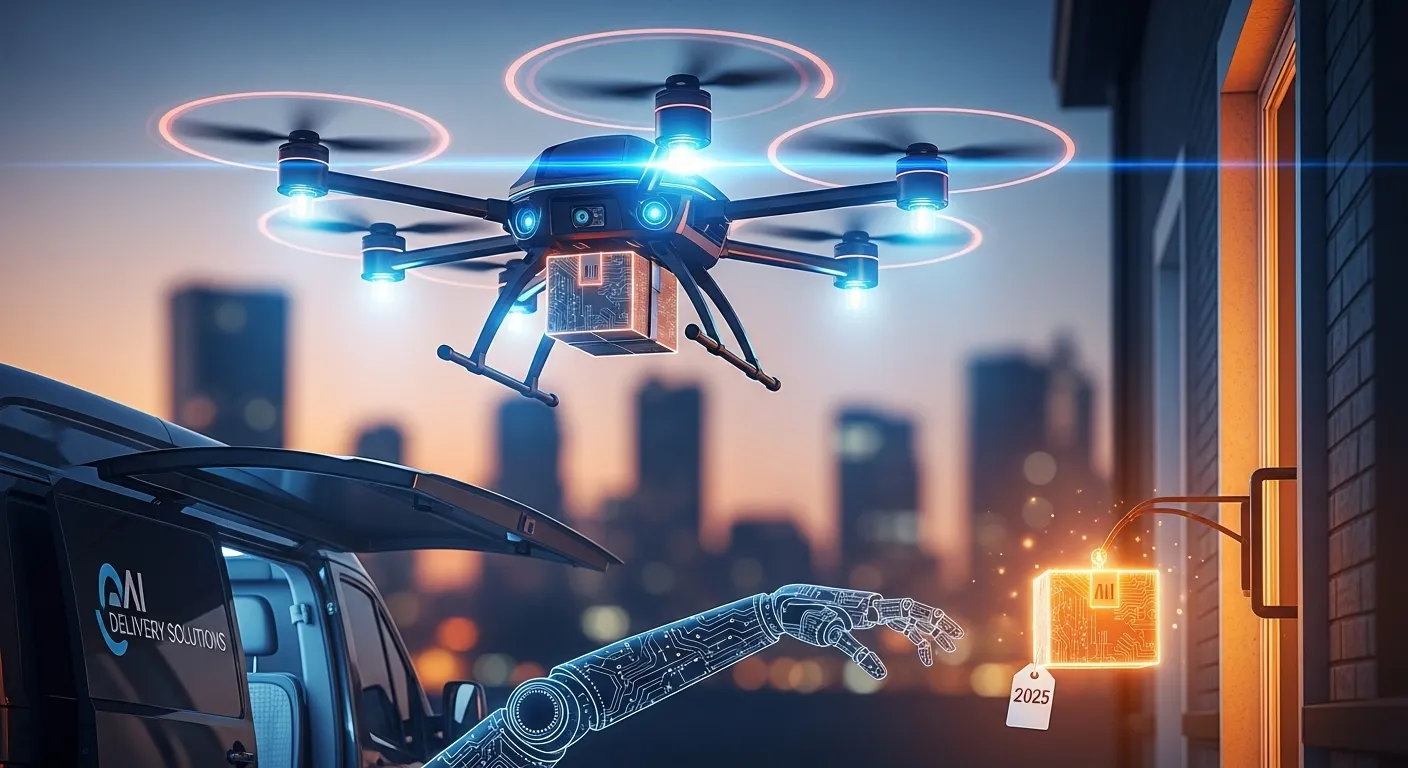That familiar truck pulling up to your curb is getting a high-tech makeover. While you’re busy tracking your package, artificial intelligence is quietly orchestrating the most complex part of the journey—the final stretch to your door. Welcome to the AI-powered last-mile revolution that’s transforming how everything from groceries to gadgets reaches your hands.
What Is Last-Mile Delivery Automation?
Last-mile delivery automation uses artificial intelligence to handle the final leg of a package’s journey—from local distribution center to customer doorstep. Think of it as giving delivery operations a super-smart brain that can predict traffic, optimize routes in real-time, and even coordinate autonomous vehicles and drones. This isn’t just about replacing drivers; it’s about creating delivery systems that are faster, cheaper, and surprisingly more human-friendly.
How AI Last-Mile Automation Works
The magic happens through a sophisticated dance of multiple AI technologies working in concert. Machine learning algorithms analyze historical delivery data to predict optimal routes, while computer vision helps autonomous delivery robots navigate sidewalks safely. Natural language processing enables smarter customer communication about delivery windows, and reinforcement learning allows these systems to continuously improve from every successful (and unsuccessful) delivery attempt.
Benefits & Use Cases
- Radical Cost Reduction — Last-mile delivery typically accounts for 53% of total shipping costs. AI automation can slash these expenses by 20-40% through optimized routing and reduced labor requirements
- Faster Delivery Times — Real-time traffic analysis and dynamic rerouting can cut delivery times by 15-30%, meaning your dinner ingredients arrive while they’re still fresh
- Enhanced Customer Experience — AI-powered systems provide accurate delivery windows (down to 15-minute increments) and instant communication, reducing missed deliveries by up to 60%
- Sustainability Wins — Optimized routes mean fewer miles driven, leading to 10-20% reduction in carbon emissions—a crucial benefit as eco-conscious consumers demand greener delivery options
Costs & ROI
Implementing AI last-mile solutions varies widely based on scale. Small to medium businesses might spend $5,000-$20,000 monthly for software-as-a-service route optimization platforms. Larger enterprises implementing comprehensive systems with autonomous vehicles can invest $500,000 to $2 million initially. However, the ROI typically materializes within 6-18 months through reduced fuel costs, lower labor expenses, and increased delivery capacity. Many providers now offer usage-based pricing, making entry more accessible for growing businesses.
US Logistics Landscape
American cities are becoming living laboratories for last-mile innovation. In urban centers like New York and San Francisco, companies like Nuro and Starship Technologies are deploying autonomous delivery robots for local restaurant and grocery deliveries. Meanwhile, Amazon’s Scout robots are navigating suburban sidewalks in several states. The US market is particularly ripe for automation given our combination of high labor costs, sprawling suburbs, and consumer expectations for rapid delivery. Major carriers like UPS and FedEx are investing billions in AI routing systems to stay competitive against tech-native players.
Alternatives & Comparisons
- Full AI Automation — Uses autonomous vehicles, drones, and robots. Pros: Maximum efficiency, 24/7 operation. Cons: High initial investment, regulatory hurdles
- AI-Assisted Human Delivery — Human drivers using AI-optimized routes. Pros: More flexible, easier implementation. Cons: Still requires human labor, subject to human error
- Traditional Human-Only Delivery — Drivers using basic GPS. Pros: Simple, no tech learning curve. Cons: Inefficient, expensive, limited scalability
- Crowdsourced Delivery — Uber-style gig economy model. Pros: Flexible capacity. Cons: Unpredictable quality, higher costs during peak demand
Implementing AI Delivery Step-by-Step
- Assess Your Current Operations — Analyze your existing delivery data, pain points, and customer feedback to identify where AI can deliver the most value
- Choose Your Automation Level — Decide between full automation (robots/drones) or AI-assisted human delivery based on your budget, location, and customer density
- Select Technology Partners — Evaluate AI logistics platforms like Routific, Locus, or Bringg that match your scale and integration needs
- Pilot in Controlled Areas — Start with limited geographic areas to test, gather data, and refine your approach before full deployment
- Scale and Optimize — Expand successful pilots while continuously monitoring performance metrics and customer satisfaction
FAQs
Will AI delivery automation eliminate delivery jobs?
While some driving roles may evolve, most experts predict a transformation rather than elimination. New positions are emerging in robot monitoring, system maintenance, and customer experience management. The World Economic Forum estimates that AI in logistics could create more jobs than it displaces by 2025.
How reliable are autonomous delivery vehicles in bad weather?
Current generation autonomous systems still struggle with heavy rain, snow, or fog. Most implementations use hybrid approaches—autonomous vehicles for clear conditions, human drivers for challenging weather. The technology is improving rapidly, with newer sensors better handling adverse conditions.
What about package security with unmanned deliveries?
AI systems incorporate multiple security layers including real-time monitoring, secure compartment locking, and customer authentication via smartphone. Some systems use one-time codes or biometric verification. Theft rates for autonomous deliveries are currently comparable to or lower than traditional methods.
Bottom Line
AI in last-mile delivery isn’t some distant future concept—it’s happening right now in neighborhoods across the country. The combination of rising consumer expectations, labor challenges, and environmental concerns makes automation not just attractive but necessary for logistics companies that want to stay competitive. Whether you’re a business owner considering implementation or just curious about why your packages are arriving faster, understanding this transformation helps you navigate the new landscape of instant gratification delivery.

